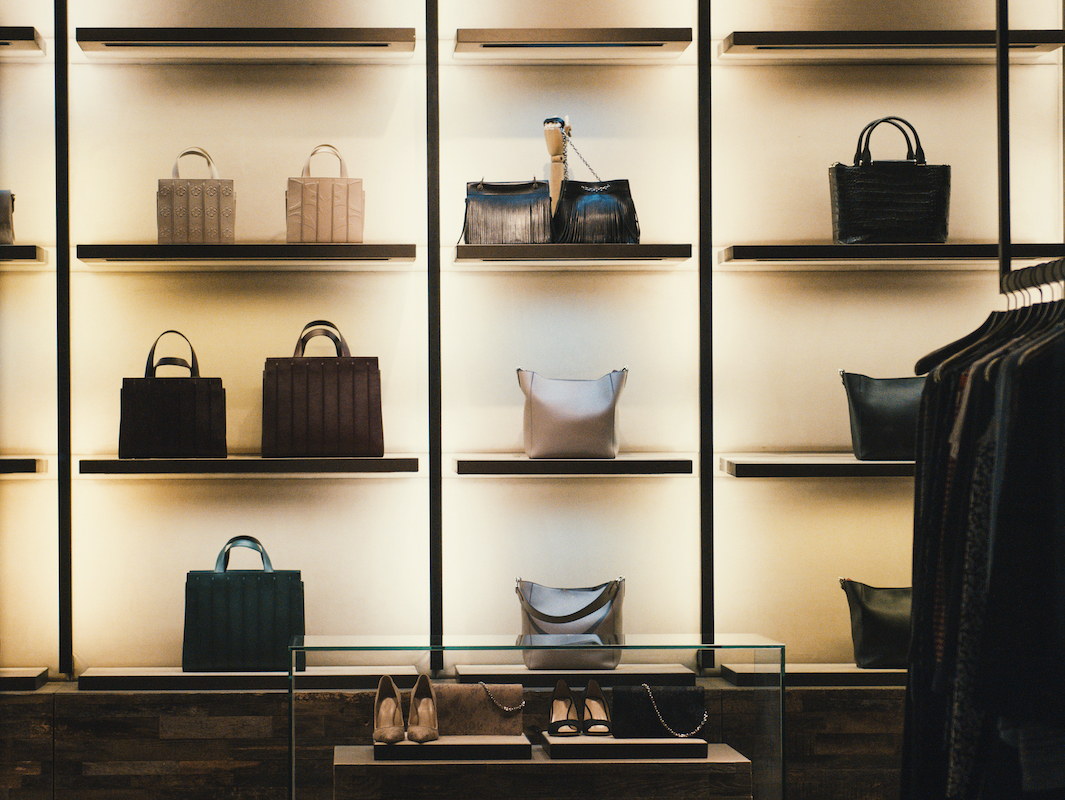This website uses cookies so that we can provide you with the best user experience possible. Cookie information is stored in your browser and performs functions such as recognising you when you return to our website and helping our team to understand which sections of the website you find most interesting and useful.
Tempus British Luxury Review 2022
By Lysanne Currie | 25 January 2023 | Wealth
It was the year that brought us revenge spending, teens splashing out on luxury items and the loss of a champion of British luxury brands. But, as the industry’s response to the Ukraine war and the climate crisis shows, the luxury sector could be forging a new future, pivoting from ‘status’ to ‘purpose’. Here’s our rundown of the year…

The cost of living crisis has seen the biggest slump in living standards since the 1950s for many Britons, yet the UK’s luxury sector appears to be relatively immune to the economic downtown, with revenue in the luxury goods market topping £11.35bn ($13.73bn) in 2022 (Statista) and firms reporting bumper profits for everything from designer clothing to expensive watches through to extravagant family holidays.
Although much of this can be explained by ‘revenge spending’ after a gruelling two years of lockdowns and Covid-19 restrictions, the super-rich are instead going for Stella McCartney’s new Frayme Mylo handbags (made from ‘mushroom leather’ mycelium) or luxury adventure specialists Pelorus noting the rise of “high impact conservation” vacations (think joining a African anti-poaching unit for a week rather than experiencing a conventional safari). It’s clear the industry is experiencing a small but perceptible shift from luxury as ‘status’ to luxury powered by purpose and social responsibility instead.
The key drivers of this trend are arguably the gen-Z and millennial generations, who now account for 72% of the global luxury market, and are demanding sustainability and transparency from luxury brands. These values are also increasingly reflected in the industry too, most notably the swift decision made by many UK brands to cease operations and trading with Russia following its invasion of Ukraine in February 2022, a move which has cost many companies millions.

The sector is still beset with challenges, with the 2020 abolition of the tax-free shopping scheme hitting UK retailers. Meanwhile, the UK luxury sector lost arguably its biggest totem when Queen Elizabeth II passed away in September. From the highs to the lows, we look at the trends that have shaped the previous 12 months and gaze into our crystal ball to see what 2023 might offer…
Global and UK recovery: luxury is back
There is now a record 610,000 people classed as ultra high net worth individuals (UHNWI) – with assets of more than $30m/£22.4m – around the world, an increase of 9.3% since last year, according to property consultants Knight Frank. In the UK, these UHNWIs have doubled since 2016 and now number 25,771 (UK prime minister Rishi Sunak is also a UHNWI, whose combined fortune with wife Akshata Murty is £730m).
They’ve been spending this wealth too: the global luxury industry is projected to reach €1.4trn (£1.2trn) in sales revenue this year, up 21% from 2021 according to a report from Bain & Co/Altagamma. As a result, the balance sheets of many luxury goods corporations are in excellent shape. The Q3 sales for LVMH (the world’s largest luxury goods company which owns Christian Dior, Stella McCartney and TAG Heuer watches) climbed 19%; Hermès and Kering (owner of Gucci and Balenciaga) recorded increases of 32.5% and 14% over the same period. The UK’s luxury goods market is equally as buoyant, worth $13.73bn/£11.35bn, and with even Amazon appearing to have its eyes on the sector, launching its Luxury Stores division in June.

The rise of 'revenge spending'
An estimated £140bn was saved by UK households during the pandemic, according to the Office of National Statistics. 2022 was the year when many seemed eager to spend these funds, forking out on weddings, socialising and holidays missed during lockdowns (plus clothing for these events). This boom for ‘revenge spending’ was seen most markedly in the luxury sector, with one industry expert from Moët Hennessy hailing it as the start of the “new roaring 20s”. Despite the recession, there has also been a demand for mood-bosting small luxuries, leading some to speculate that the lipstick index – Leonard Lauder’s notion that sales of affordable luxuries rise during economic downtowns – has returned.
Gen Z splash out
The future of the luxury goods market appears to be in rude health, largely thanks to millennial and Gen Z consumers. These age groups, which are defined by their YOLO (“You Only Live Once”) attitude and conspicuous consumption on social media such as Instagram and TikTok, now account for 72% of the global luxury market, according to management consultancy Bain & Co. Gen Z-ers, those largely mortgage-free youngsters born between 1997 and 2012 – are now purchasing luxury items at around age 15, around three-five years earlier than their millennial forebears. As such, Bain & Co predicts this generation will comprise a third of the luxury goods market by 2030.

Luxury with a conscience
The socially-conscious values of Gen Z are also being mirrored by luxury brands, who are now increasingly sharing public statements on environmental and social issues, whether it’s pledging to cut carbon footprints or taking a stance on human rights. Nowhere was this more starkly illustrated in 2022 than when brands such as Burberry and Aston Martin made the sudden decision to stop sales to Russia following Putin’s invasion of Ukraine. By preventing oligarchs from purchasing their designer handbags or supercars, many firms lost millions (UK companies sold £2.6bn of goods to Russia in 2021), but the alternative – being a pariah business blacklisted by consumers – would have been worse.
Challenges for British Luxury
The British luxury sector has expressed concern that the decision to scrap the VAT Retail Export Scheme in 2020 (a scheme which saw non-EU tourists reclaim 20% VAT paid on their purchases) risks tarnishing the UK’s calibre as a luxury shopping destination, with many luxury shoppers heading to the boutiques of Paris and Milan instead. It’s been predicted the scheme’s termination could lose as much as £680m in tax revenue, as well as put 41,000 jobs at risk.
Meanwhile, Covid-19 restrictions in China has been unwelcome news for those UK luxury brands favoured by the country’s tourists, which were the world’s top tourism spenders prior to the pandemic ($254.6bn (£195m in 2019). China’s Covid-19 restrictions also caused supply chain headaches for many brands in 2022.
New Year's trends
A recent report by Bain & Co and Italian luxury goods trade body Altagamma forecasts that the global luxury market will be even more “recession-proof” in 2023 than during the 2008/09 financial crisis. In particular, conditions look rosy for the personal goods market, which is forecast to show accelerated growth of 22% to €353bn.







